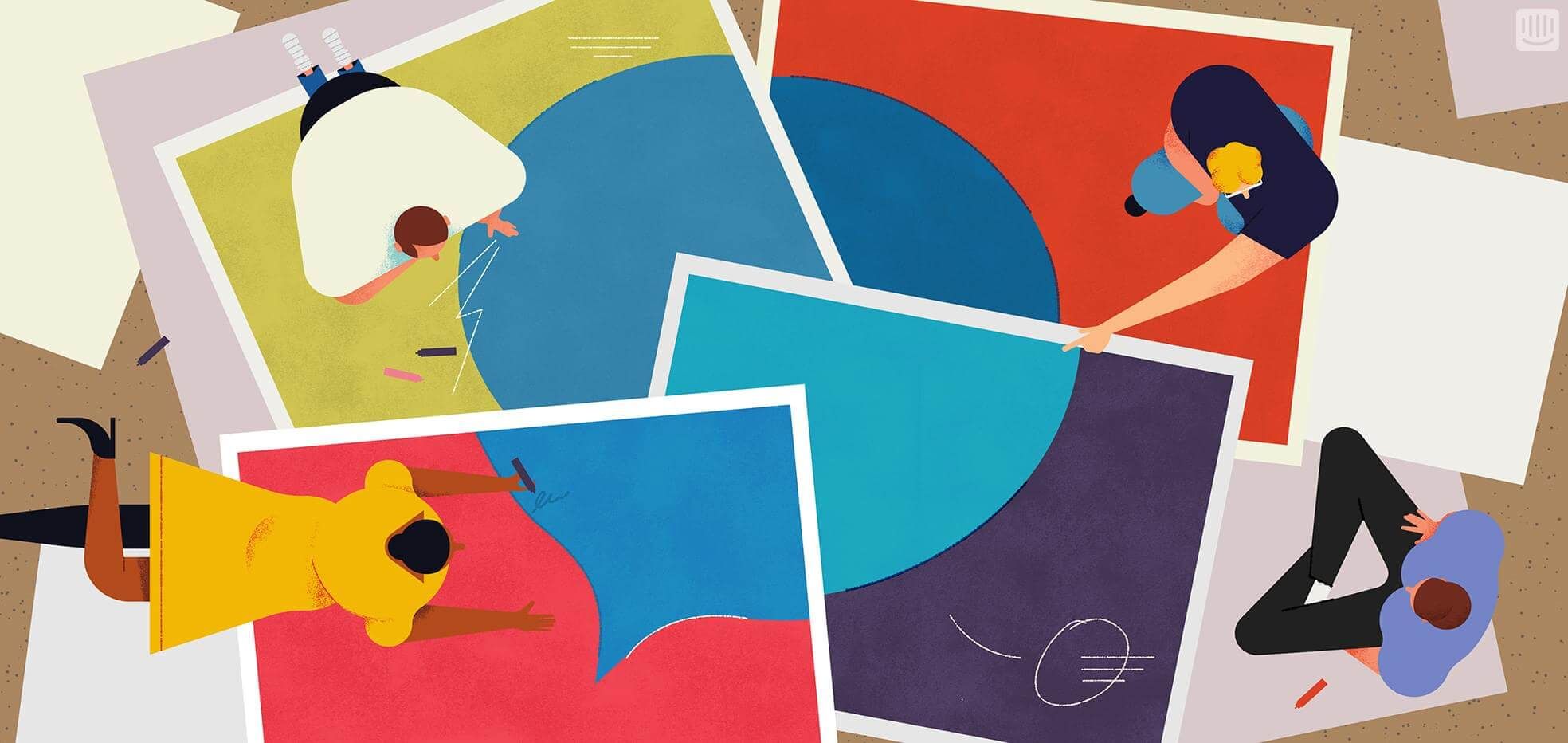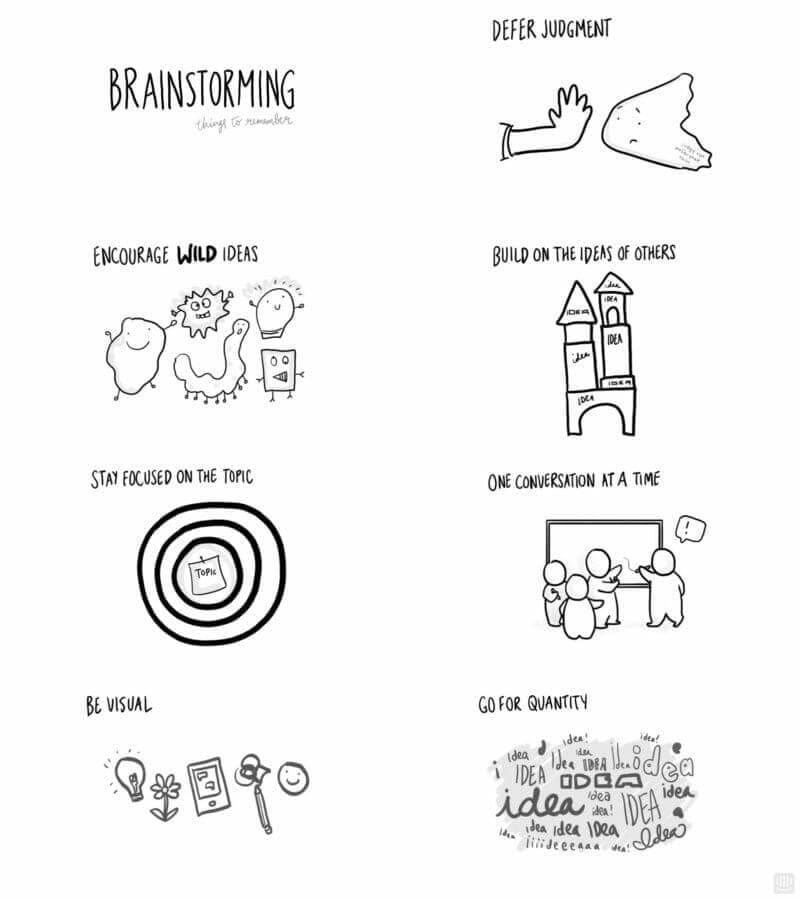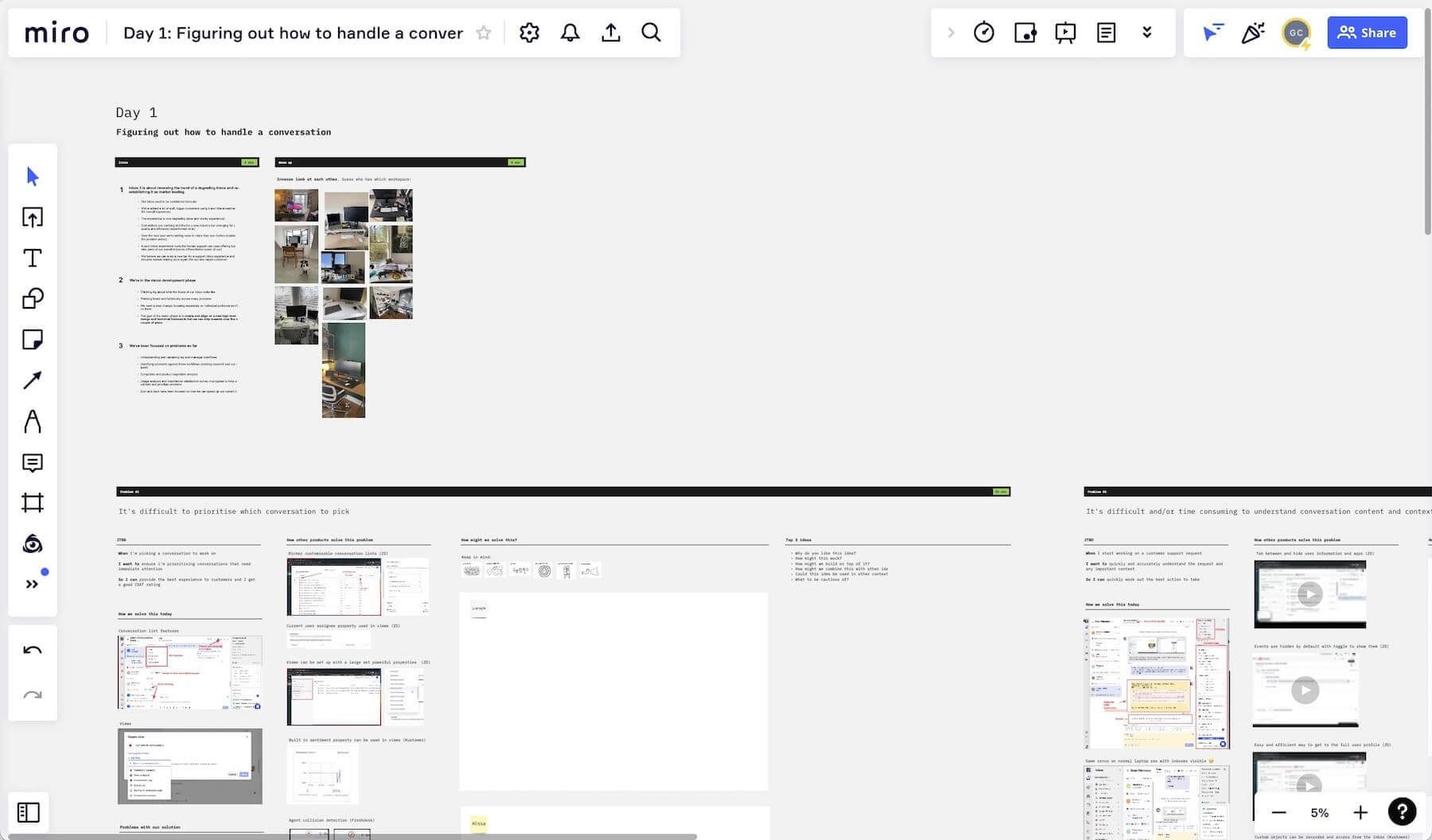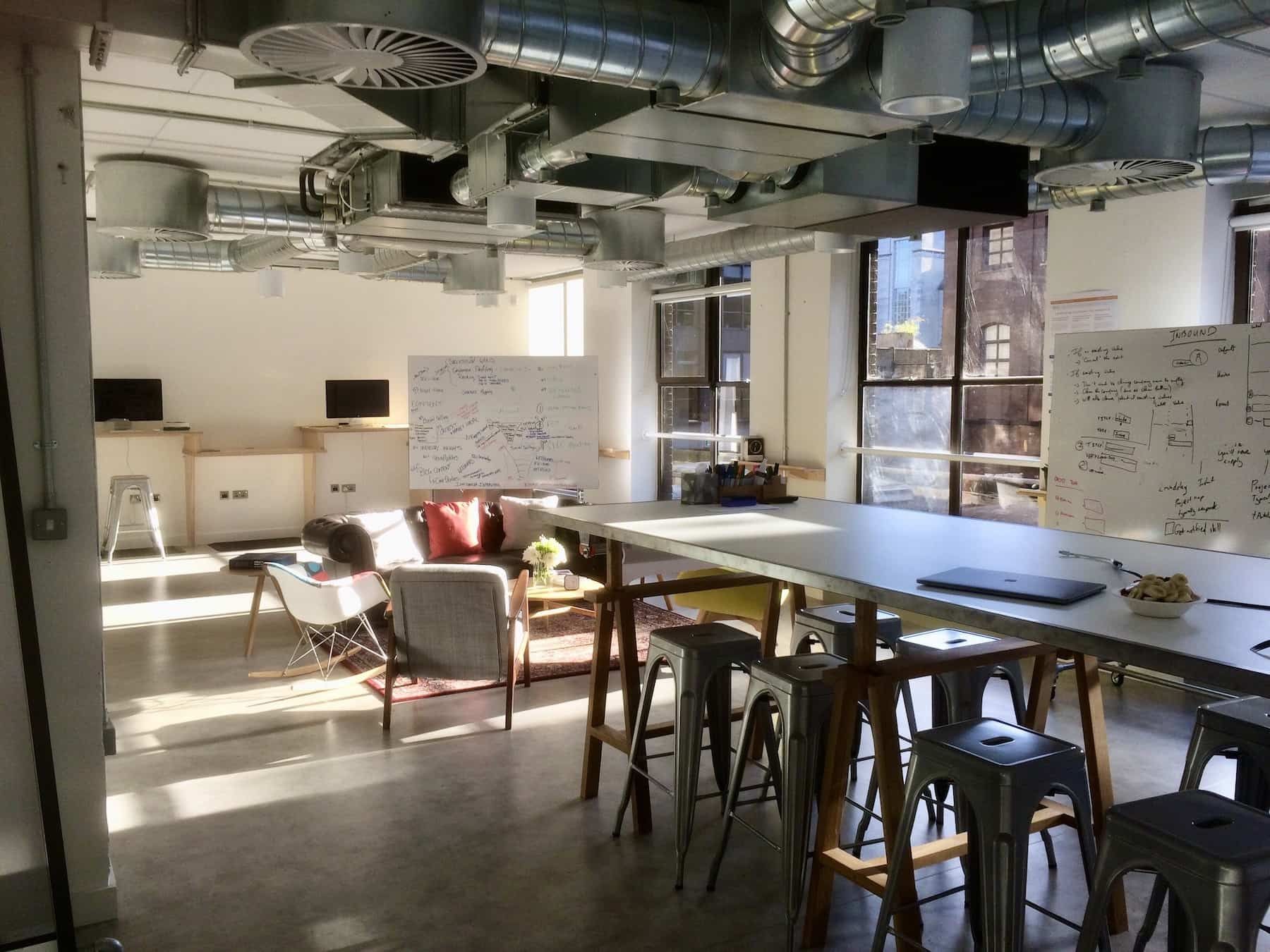
14 tips to help you run a successful product design workshop
Main illustration: Adam Avery
Design and collaboration go hand-in-hand. When we want to discuss problems, imagine new ideas, and brainstorm solutions, it’s best to bring people together – whether in person or virtually.
Collaboration comes in many flavors, from small informal working sessions and group critiques to full-blown workshops.
But beware: just bringing people together doesn’t automatically guarantee creative outputs and ideas. Too often, a discussion can become unfocused, brainstormed solutions end up scattered and lacking direction, or the session devolves into a competition of who can assert their ideas louder.
What are product design workshops?
Product design workshops are an opportunity for a team to untangle a problem together by going through a series of group exercises designed to get to a specific outcome. Workshops are about getting stuff done, and are often used as milestones to start things or make decisions.
“As the organizer, it’s your responsibility to ensure everyone’s time is spent wisely and you uncover the insights needed to move the project forward”
At Intercom for example, we like to run workshops to kick off big projects with the broader team. It takes clear and deliberate planning to run a kickass workshop. As the organizer, it’s your responsibility to ensure everyone’s time is spent wisely and you uncover the insights needed to move the project forward.
When done well, workshops are invaluable to jumpstarting your team’s progress on any project by uniting diverse opinions and getting people on the same page.
How to create a workshop that leads to productive design
Here are our tips for running a successful product design workshop (though this advice can be applied to problem-solving workshops more generally).
- Start with an overview
- Determine the goal
- Decide who needs to come
- List the tangible outcomes
- Decide when and where it will be
- Work backwards to make a plan
- Detail the activities in each section
- Use improv games to warm up
- Be mindful about brainstorming
- Sketch out more ideas
- Share ideas
- Delegate when needed
- Make slides
- Keep track of time
Below, we’ve elaborated on how you can incorporate each step into your own workshop.
1. Start with an overview
Get the bare-bones, high-level plan of your workshop in place by answering the following basic questions. You can do this in a Google doc, or whatever tool works best for you, and share with key stakeholders for feedback as you plan.
2. What is the goal of the workshop?
In a few sentences, write out why you’re holding this session as if you’re sending out a calendar invite for it. Then, try to articulate concrete goals in the form of actions. Take the example of a multipart workshop we ran about the vision of our support products.
These were the goals of the workshop:
- Come together as a team to discuss our vision for Intercom Support
- To brainstorm and design “north-star” concepts for our Support offering
- Draft up key principles we should consider in approaching upmarket support projects
- To have fun!
3. Who needs to come?
Ideally everyone in your workshop should actively contribute, so it’s best to keep numbers relatively low. We’ve found that small groups of 5-8 people tend to be big enough to amass varying ideas, but small enough for everyone to still participate fully – that goes for both in-person and remote workshops.
“It’s helpful at this stage to bring in folks with different perspectives, so keep that in mind as you put together your invite list”
It’s helpful at this stage to bring in folks with different perspectives, especially if the session is around generating solutions, so keep that in mind as you put together your invite list.
4. What are the tangible outcomes?
List the tangible outputs from your workshop that you want to share or report on afterward. Similar to your goals, this will help you clarify how to structure your workshop later. As an example, the deliverables for our workshop were:
- At least one concept/screen from each designer at reasonably high fidelity
- A list of generated ideas and a summary of the session to send out to the Product team
- A doc of draft product principles to send to the product team for feedback and review
5. What date will it be? How long will it run?
Based on your goals and the number of people you’ve invited, find a date – or dates if you’re running a multi-day workshop – and roughly estimate how long the workshop will take. Know that this estimate will likely change, but having a ballpark number will help you plan later details, like where the workshop will be or what exercises to run with the group.
Where will the workshop be held?
You’ll need to decide if you would like to run the workshop in person or remotely. There’s a certain effect of physically being together with other people and working through problems together, but these days people may be more comfortable working remotely – and remote collaboration software makes it possible to run highly productive workshops even if you’re in different locations.
“The workshop environment should feel fluid and open to encourage dialogue among the team”
If you’ll be running an in-person workshop, think about what kind of space your session needs, considering its length, goals, and number of people. For example, you may decide that a 4-5 hour session is better held offsite to make it feel special and draw more focus. The workshop environment should feel fluid and open to encourage dialogue among the team.
A particularly great physical location, in our experience, is a larger room with a tall table in the center surrounded by high stools, so everyone can either sit or stand. This way, people sitting and standing are roughly at the same height – giving folks a sense of equality and flexibility at the same time. Make sure there’s plenty of wall space and whiteboards too.
Intercom’s Design Studio in Dublin
If you’ll be running a remote workshop, you’ll need a video conferencing tool (such as Zoom or Google Hangouts) and a virtual whiteboard (such as Miro or Whimsical). Make sure to let participants know ahead of time what software you’ll be using so that they can install and check it before the workshop.
To make sure everyone has an equal voice, it’s better to do a fully in-person or fully remote workshop. If you have a mix of in-person and remote participants, it’s better to use the virtual whiteboard as the canvas on which to place ideas.
6. Work backwards and think in chunks to make a plan
With a rough overview in place, it’s time to create a workshop outline. Take a look back at the goals you listed, and think about what activities you need to do in your workshop to achieve them.
“Each activity usually takes longer than expected, so make sure to leave some buffer room”
Try to organize these activities into distinct chunks of your workshop. Assign a rough time estimate to each section, and as you plan out more of the details, you can go back and adjust the length of your workshop as needed. Consider that each activity usually takes longer than expected, so make sure to leave some buffer room.
For example, for the workshop on the vision of our support products, here’s what we had come up with at this stage:
Background (~1 hour)
- Intro (5 min)
- Goal of workshop
- Agenda
- Warm-up exercise
- Building understanding (20 min)
- Background info on domain
- Looking at competitors
- Analogous examples
- Internal research
- Framing the problem (5 min)
- Talking about the future of support (20 min)
- Interviews from other stakeholders
— Break (5 min) —
Pre-brainstorm activities (30 min)
- Exercises (30 min)
- Love letter, break up letter (10-15 min)
- Drawing the present vs. future (10-15 min)
— Lunch (1 hour) —
Brainstorm (35 min)
- Warm-up exercise (3-5 min)
- Brainstorm (30 min)
Sketching (40 min)
- Mind map (10 min)
- Sketching on paper (30 min)
Share out (30 min)
- Share out (20 min)
- Wrap up (5-10 min)
Brainstorm principles (1 hour)
Next steps (5 min)
- Plan for next time
- Feedback on how session went
7. Detail the activities in each section
Now your workshop is taking shape. You’re at the point where you should go back and hammer out the details so you’re crystal clear about what you’re going to discuss with the group and what exercises you’ll do together to help you accomplish your goals.
Here’s some advice on how to facilitate common aspects of a design workshop – getting the group acquainted, brainstorming, sketching and sharing ideas.
8. Use improv games to warm up
People are coming to your workshop from a variety of other meetings, so while they might be physically present in the room, their mind might still be wandering from a previous discussion.
In one workshop we participated in, even though the organizer had stated the goal of the session upfront, people were confused about what we were trying to do when we jumped into brainstorming cold, simply because they had been distracted at the start of the session. We had to spend an extra five minutes backtracking to catch everyone up, and from there it took some more time gearing up to brainstorm out-of-the-box future concepts. We ended up losing time and momentum because people simply weren’t focused.
“It’s worth taking the time at the beginning to set the tone for your workshop and get everyone thinking as a team in sync”
It’s worth taking the time at the beginning to set the tone for your workshop and get everyone thinking as a team in sync. Improv games are a great way to do this, energizing people, and setting them up to be productive in your session. For instance, if one of your goals is to brainstorm future solutions to a problem, everyone in the room needs to be free of previous distractions and get to a place where they actually can do this – where they feel uninhibited and able to let their minds play.
Here are some of our favorite improv games to help everyone become present. If you’re worried about the skeptic in the room, I’ve found that taking a few minutes to explain the goal of these funky exercises can assuage any concerns long enough for people to get into the game and the benefits to start kicking in. Some work virtually, others don’t – but no matter what form your workshop takes, there’s a way to get people engaged.
Alphabet (in-person or virtual)
If you’re in the same room, stand in a circle. The goal is to recite the alphabet one person at a time, in no particular order. If more than one person says the same letter at the same time, you have to start over from “A”.
Good for: Energizing the group, building group focus.
Sound ball (in-person)
Everyone stands in a circle. One person throws an invisible “ball” to another, accompanied by a sound. As the person catches the “ball”, they must repeat the sound that was thrown, and throw the “ball” to someone else with a new sound.
Good for: Energizing the group.
Three things (in-person or virtual)
One person turns to the next, or nominates another on the call, and names three random things as fast as possible. That person then has to quickly say how the three things are related.
Good for: Thinking outside the box.
Word-at-a-time proverb (in-person or virtual)
In a physical workshop, everyone stands in a circle. Virtually, this can run alphabetically, or in whatever order works. Each person in order says one word at a time. When the group feels an idea or sentence is complete, they put their hands together and say “yes yes yes.”
Good for: Energizing the group, building group focus.
For more on bringing improv into the design process, check out Liz Gerber’s paper on this subject. A quick Google search will also bring up plenty more improv activities you can try.
9. Be mindful about brainstorming
There’s nothing scarier than giving someone a blank piece of paper and saying, “Go, give me all your ideas about our product’s future vision in five minutes.” Even scarier sometimes is when there are six other people in the room, and you’re expected to talk about this together.
Running a good brainstorm is all about making people feel comfortable enough to toss around ideas. But this isn’t always easy. Common problems are folks talking over one another, one person sharing all the ideas, or someone’s ideas getting discounted for some reason. And so, no matter how experienced a group is, it’s always a good idea to take a minute to go over some ground rules for brainstorming before we begin. Even a quick run-through will get everyone on the same page and in the mood for a productive session together.
Design and consulting firm IDEO’s rules for brainstorming:
- Defer judgment
- Encourage wild ideas
- Build on the ideas of others
- Stay focused on the topic
- One conversation at a time
- Be visual
- Go for quantity

IDEO’s rules for brainstorming. Illustration by Cindy Chang
As an illustrator and one who enjoys hand-drawn slides in the workplace, Cindy’s sketched out these rules into reusable assets so they’re handy anytime we do a workshop. People seem to respond well to their informal and inherently creative nature – a good way to ease into brainstorming and sketching. Feel free to try these out for yourself in your next successful workshop.
“Ask questions and introduce constraints if people are stuck brainstorming”
To help get people’s creative juices flowing, it’s also good practice as the facilitator to have a couple of example ideas up your sleeve, so you can start the conversation and spark ideas in other people. Ask questions and introduce constraints if people are stuck brainstorming; for example, what if we had a million dollars to solve this problem? What if we had to deliver it in two weeks?
Depending on the group dynamics, sometimes it can be helpful to split the brainstorming into two sections. First, spend a few minutes getting everyone to write down their own ideas on Post-its (physical or virtual), and then have everyone introduce their ideas to others. Or if you’re running a workshop with a larger group, you can have everyone read the Post-its by themselves and vote on which ones they’d like to talk about in more detail. Continue to build on top of ideas after everyone has a chance to share their initial thoughts.
10. How to sketch more ideas
Sketches are often the most tangible output from a design workshop, allowing everyone to explore concepts on their own. They’re easier to manage in an in-person workshop, but there are ways to make it work for remote workshops too:
- Have everyone sketch their ideas on paper and then upload photos to your virtual whiteboard
- If the participants have access to an iPad with a pen they can sketch directly on the virtual whiteboard
- Sometimes just talking about your ideas using Post-its can be enough, especially if you later synthesize the ideas and come up with your own sketches to illustrate them
It’s critical here to strike a balance between freedom and constraints – give people enough time and space to sketch out ideas, but constrain them to encourage creativity.
“When we have too much time to explore ideas, we tend to go deep on a few concepts and get attached to them quickly”
We’ve often found that when we have too much time to explore ideas, we tend to go deep on a few concepts and get attached to them quickly. The goal of sketching out ideas in a workshop is to go for quantity, not quality. We want the “bad” ideas, the technically unfeasible ones, and the “north-star” concepts just as much as we want near-term fixes and predictable solutions.
Anything goes. This is the time to let your ideas flow, unfettered, and get a brain dump of all possibilities. There will be plenty of time later to think rationally and cut back, but the more you get out all your ideas now, the more confident you’ll be of your ultimate solution.
As a rule of thumb, 10-15 minutes of sketching time for a one-hour workshop is more than enough. Again, as the facilitator, encourage quantity over quality.
Pro tips:
- If you’re running an in-person workshop, putting on some calm background music can help people focus (but ask first, since this depends on the group’s preferences).
- “Crazy 8s” is a helpful technique for smaller groups that might feel stuck or intimidated by sketching ideas. Have everyone fold a sheet of paper in half, and in half again, until you have eight sections. Encourage folks to draw one idea in each box and try to fill all eight before time runs out. We’ve found that having a tangible numerical goal to shoot for can help push some people to think of more ideas.
11. Sharing ideas productively
It’s not enough to just individually sketch ideas – sharing them is where the interesting discussions take place. Have everyone put up their sketches on the wall or virtual whiteboard, so the group can see all the ideas equally. Give a few minutes to each person to walk through what they came up with, and build in extra buffer time if possible to allow for conversation.
If one of the goals of the workshop is to assess these ideas, dot-voting (or upvoting on a virtual whiteboard) is a great way to help the group narrow things down while giving everyone an equal voice.
Lastly, before wrapping up, make sure each idea has an author assigned to it to help with follow-up questions after the workshop.
12. Delegate when needed
At this point, you’re doing a lot. If you’re the one running the workshop it can feel totally overwhelming to not only plan and run the whole thing, but also to prepare all the content needed for it.
“Don’t be afraid to ask for help. Consider pulling in teammates to flesh out sections of the workshop”
Don’t be afraid to ask for help. Consider pulling in teammates to flesh out sections of the workshop. Your Product Manager might be the most knowledgeable about the product domain, or a researcher might be the best at explaining use cases.
In our Support workshop, for example, we asked a few other designers to prepare a few slides on competitors and analogous examples. Sharing this responsibility helps everyone feel involved and invested in the process. Changing up who’s presenting has the added benefit of keeping the session feeling fresh, so folks aren’t bored by the monotony of just one person talking for hours.
13. Make slides or a virtual whiteboard
With all the details planned out now, it’s time to bake your hard work into slides or if you’re running the workshop remotely, a virtual whiteboard with sections for each activity. Yes, put in a section or slide even for that five minute break, a section to recap what you’ve done and what else is left in the workshop, a section to illustrate the activities you’ll do. The goal here is to offload the plan entirely from your head so that you’ll feel in control and relaxed during the actual workshop. It can feel like a lot of work but it will create a smooth schedule that can elevate the workshop experience for everyone.

Miro virtual whiteboard
14. Keep track of time
Timing activities accurately is an art. You should always have an estimate for how long something will take, but expect this to be fluid in reality and be prepared to roll with the punches on the day of the workshop. That’s why it’s helpful to plan in some time buffer.
Keep an eye on the clock to stay on track, but do this subtly. Timing activities rigidly by displaying a countdown timer on a screen can create a pressured environment, making it harder to brainstorm and be creative. The best workshop experiences are usually those that feel most natural and lightweight for the participants. As a facilitator, simply announcing 10 minutes for an exercise and then keeping one eye on the clock will put your attendees at ease. It may be a little more effort for you – but it will be a better experience for everyone else.
Extra jazz
For bonus points, here are more tips to make your workshop even more seamless, natural, and thoughtful:
- If you’re doing an in-person workshop, show up 10 minutes early to prep, make sure the technology works, and even set the mood with upbeat music to energize folks as they arrive.
- Stop periodically for breaks. Water and snacks are a nice touch to keep energy levels high.
- Set ground rules around using devices so everyone has common expectations and won’t be distracted throughout your session.
- If the group discussion starts to get derailed by off-topic questions or comments, push for progress on your original plan by capturing these points on the whiteboard and coming back to them later if you can. Make an effort to address these questions after the workshop if you run out of time.
- Nominate someone beforehand to be a documenter for the workshop.
- It’s nice to have someone taking pictures of people in action during the workshop, whether it’s in-person or virtual. This kind of documentation is not only a good memento, it can also be a valuable inclusion to a workshop recap you might send out afterward.
- Spend the last 5 minutes wrapping up to discuss next steps and action items. Thank everyone for their time. This can also be a great chance to ask for feedback on how the session went.
- Send out a recap to all participants and stakeholders to summarize what you did in your workshop.
- Add in some photos and artefacts from the session – this keeps the momentum going and helps communicate next steps to the team.
Try out a product design workshop for yourself
Organizing and facilitating a design workshop can be challenging. But by stringing together the right people and plan, design workshops will become an important part of your team’s process to kick off projects, discuss problems, and cook up new solutions. As the facilitator, being deliberate and thoughtful in how you structure these sessions will pay off in spades as your team generates momentum in solving hard problems. And don’t worry, you’ll always have another chance to iterate on the experience.
Interested in the way we work at Intercom? Take a look at our open product design roles.









